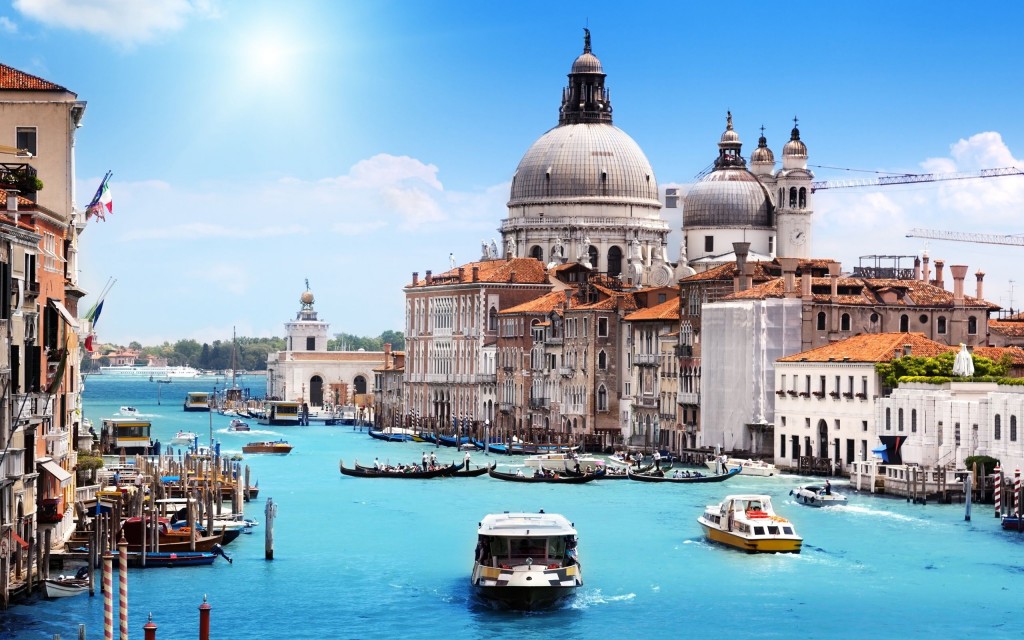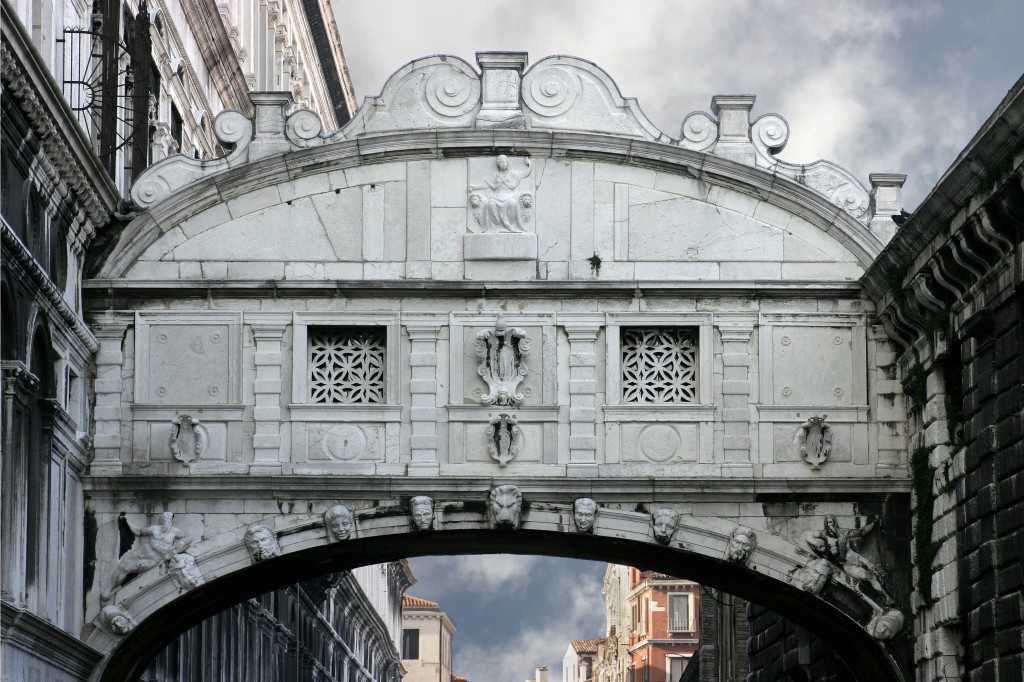Venice, the “Bride of the Sea” or the “Queen of the Adriatic” as what many people dub it, is known in the entire world as a beautiful, romantic city where time has come to a standstill for hundreds of years. You will capture its very essence as you walk through its narrow streets, cross its bridges, enjoy a gondola ride along its canals, and allow its timeless atmosphere to spellbind you. Visit and get a first-hand experience of Venice, for this is the only way to truly learn about it.
Venice in a Nutshell
Venice is a small city in the northeast part of Italy. It is a clump of 118 tiny islands sitting on the marshy Venetian Lagoon just off the border of the Adriatic Sea. These tiny islands are separated by 150 canals, which 400 bridges connect stylishly. Gondolas and water taxis ply the canals and other waterways. Venice is home to palazzos, churches, museums, palaces, theaters and opera houses, bridges, art galleries, and piazzas. But the city itself is a large gallery of man’s handiwork and divine masterpieces.
Best Time to Visit

Venice always teems with tourists, come hell or high water. What your experience will be in Venice largely depends when you visited the city. The months from May to October are generally the recommended time to travel to Venice because these are the months that span spring, summer, and early autumn. Late autumn coincides with Acqua Alta, or high water, and is the reason why visits are discouraged all through the winter. These are the months from November till early March. While this is true, some visitors still opt to see the magic of the city, especially on Christmas, when Venice is a lot quieter and subdued.
In deciding when to see Venice, the calendar of festivals and activities must also be considered. The Carnevale or Mardi Gras, for instance, takes place between February and March when winter wanes. Festa del Redentor occurs in July when all of Venice swelters. Acqua Alta starts in October, but it is also a lovely time to see Venice in autumn and the Opera Season at La Fenice. Whatever is the season when you visit, there is a reason to enjoy Venice.
Climate
The important thing when visiting Venice is that you know what season will greet you when you set foot on Venetian soil, and prepare for it so that there will be no unpleasant surprises. These are the general climate descriptions:
Summer begins in June until August when temperatures are generally hot and humid. July is the hottest and the most humid month of the year. The city gets rained uniformly throughout the year but August is the wettest month of the summer season. Autumn is brief, but lovely, occurring from September until early October. Winter is long (from October until February) and chilly because of cold winds from the Adriatic Sea. Temperatures in January can reach 9-degrees below zero centigrade. Precipitation starts falling more frequently but not heavily in spring and temperatures average at cool 18-degrees centigrade. It will be foggy and cold until May when it begins to heat up again for the summer in June.
Top Attractions
It has been said that Venice draws all of Europe towards it. In fact, it has become the center of music and art, and cultural treasures. A travel to Venice will never be complete without a peek of the following sights and attractions:
1) Piazza San Marco and the 4 Museums
Purchase the San Marco Square Pass at USD 34 and gain access to 4 museums that are within the San Marco Square vicinity. Piazza San Marco (San Marco Square) is the largest and the most important square in the city, in fact, the only one that earned the name piazza. It has a sea approach which is reminiscent of its past as a formidable maritime republic. The historic Doge’s Palace had been the center of government in Venice many centuries ago. It is a repository of masterpieces of Venetian artists. The Bridge of Sighs can be seen from here. Museo Correr holds artifacts, sculptures, armory and naval collections from Venetian history. Museo Archeologico Nazionale Di Venezia is home to ancient Greek sculpture and statues, gems, coins, bronze and ceramic collections. Biblioteca Nazionale Marciana holds Greek and Latin codices, treasured manuscripts, artworks of Venetians and the original edifice by Zecca. The pass can be used for only one entry to a museum within 1 month from date of purchase.
2) 11 Museums of Venice
Absorb the richness of Venice as a city and a people, and visit all the 4 museums mentioned earlier plus 7 others that comprise this pass. Ca’ Rezzonico can be found along the Grand Canal and has 18th century paintings by Tiepolo and Canaletto. Palazzo Mocenigo has a vast display of paintings, furnishing, and a costumes collection. The palazzo of the famous poet, Carlo Goldini, has also become the keeper of theatrical collection of puppets, manuscripts, and theater materials. Sculpture and paintings by Matisse, Klimt, Chagall and Kandinsky from the 18th and 19th century are exhibited at Ca’ Pesaro International Gallery of Modert Art. Murano Glass Museum has collections of archaeological glass and historical glass that depict their era. Burano Lace Museum features the history and evolution of lace-making which is an ancient Venetian industry. The Museum of Natural History is housed in the palace of Fontego dei Turchi. The palace itself is historic because it was built in the 8th century. Galleria dell’ Accademia is a vast collection of Venetian paintings from the 14th to the 18th centuries. The 11-museum Venice Pass costs USD 49 per person.
3) Grand Canal
This ancient and large S-shaped waterway serves as the main highway of Venice. It has a length of 9,842 ft and is lined with impressive Renaissance architectural structures owned by opulent Venetian families. While majority of the city’s traffic snakes up and down this canal, flow of people on foot is fairly busy over foot bridges that span the Canal. These bridges are sights themselves from the Grand Canal: Rialto Bridge, Ponte Degli Scalzi, and Ponte dell’ Accademia. A busy spectacle of gondolas and vaporetti plying the Canal is a uniquely Venetian encounter.
Ride the iconic gondola (water taxi) to complete your Venetian tour with a certified gondolier. A gondola can be hired to sit 6 passengers or less for USD 106 to glide along the canal for 40 minutes, and USD 53 for each additional 20 minutes. This is the rate from the morning until 7 p.m., after which the rate increases.
4) Bridge of Sighs

The Bridge of Sighs is famous for the story that promises eternal love for a couple who kisses while they drift below the bridge on a gondola. This fascinating story, imagined or true, emitted “sighs” from lovers awed by the whole panorama, hence, the bridge’s name. Venice’s world-renowned bridge, which spans the Roi di Palazzo, connects the Old Prison and interrogation rooms in the Doge’s Palace to the New Prison located directly across the river. The bridge, which was built in the 17th century, can be seen from Ponte della Paglia near the Doge’s Palace.
5) Doge’s Palace
The Doge’s Palace (Palazzo Ducale) is located in San Marco, Venice, which sits on a site that was once occupied by a 10th century wooden stockade with watch towers and a moat. The imposing palace was constructed in the 14th century to become the city’s seat of wealth and power, and Filippo Calendario was commissioned to design it in 1355. Admission starts daily at 8:30 in the morning and closes at 7:00 at night (closes at 5:30 in winter; closed January 1 and December 25). Either of the San Marco Pass or the 11-Museum Pass can be used for admission to this site.
6) St. Mark’s Basilica
St. Mark’s Basilica was built in the 11th century and is highly recognizable from its features that reflect Byzantine, Islamic, and Western European structural influences. The basilica is an architectural testimony to Venice’s glorious and powerful seafaring past. Admission to the basilica is free but visitors are given only 10 minutes to admire the interior of the church.
7) Rialto Bridge
The Rialto Bridge was built in the 16th century to span the narrowest width of the Grand Canal. It was designed strong enough to allow heavy foot traffic over it and high enough to allow boat to pass below it. The Rialto Bridge, which is lined with arcades on each side now, is considered as one of the most famous bridges in Venice. It marks the entry to the Rialto Market and remains as the city’s top attraction for tourists.
8) Peggy Guggenheim Collection
Venice is not only home to ancient and Renaissance period art, it is also home to contemporary art. Take a vaporetto to the Palazzo Venierdei Leoni in Dorsoduro 701 along the Grand Canal. This 18th century palace houses the Peggy Guggenheim Collection, which contains masterpieces of European and American contemporary artists. Most notable pieces include the works of Pablo Picasso, Alexander Calder, and Jackson Pollock. This impressive collection is open to the public in the summer season from Wednesdays through Mondays. Admission is USD 20 per visitor and free for children under 10 years old.
9) Gondola Ride
The Grand Canal is but the major waterway, but all around Venice are 150 graceful back canals. While a gondola ride will be very costly, those who can well afford it will have the most unforgettable ride of their life. Bring along a crooner to complete the experience. The cost will expectedly increase, naturally. Gondoliers have dress codes and standard flag rates. The gondola itself has to be black but each boat has a personal touch to it. Check out the rates which are officially set for the first 40 minutes and succeeding 20 minutes. Gondolas are like luxury cars, so relax and enjoy the view.
10) Carnevale
Winter in Venice is stirred up with colorful and animated parades during the Carnevale or Mardi Gras celebration. Costumed and masked crowds pack the city and entertainment is at its height. The activity surrounds Piazza San Marco and fireworks are all over the place. Hotels, too, hold masquerade balls and similar festive activities.
- Pages:
- 1
- 2
